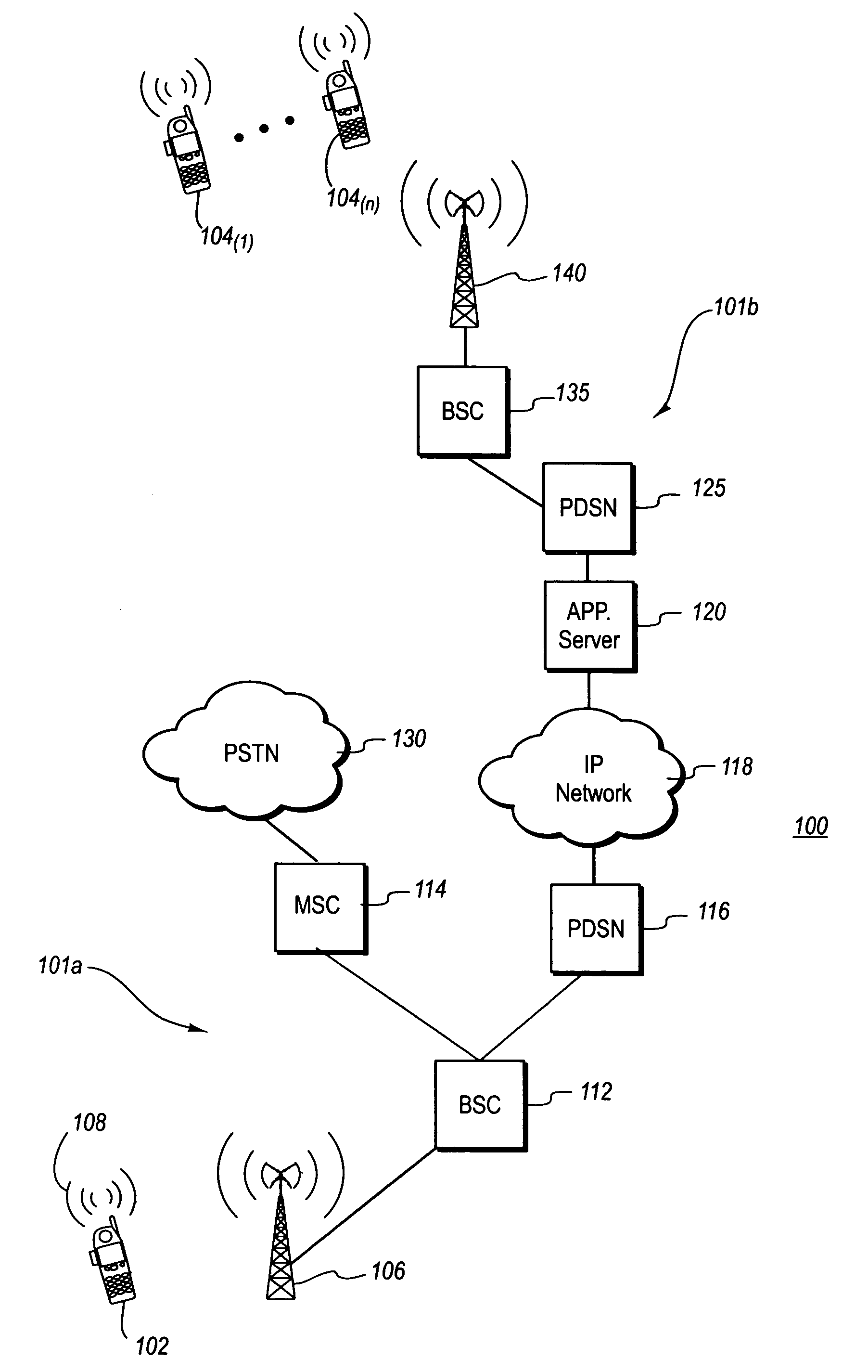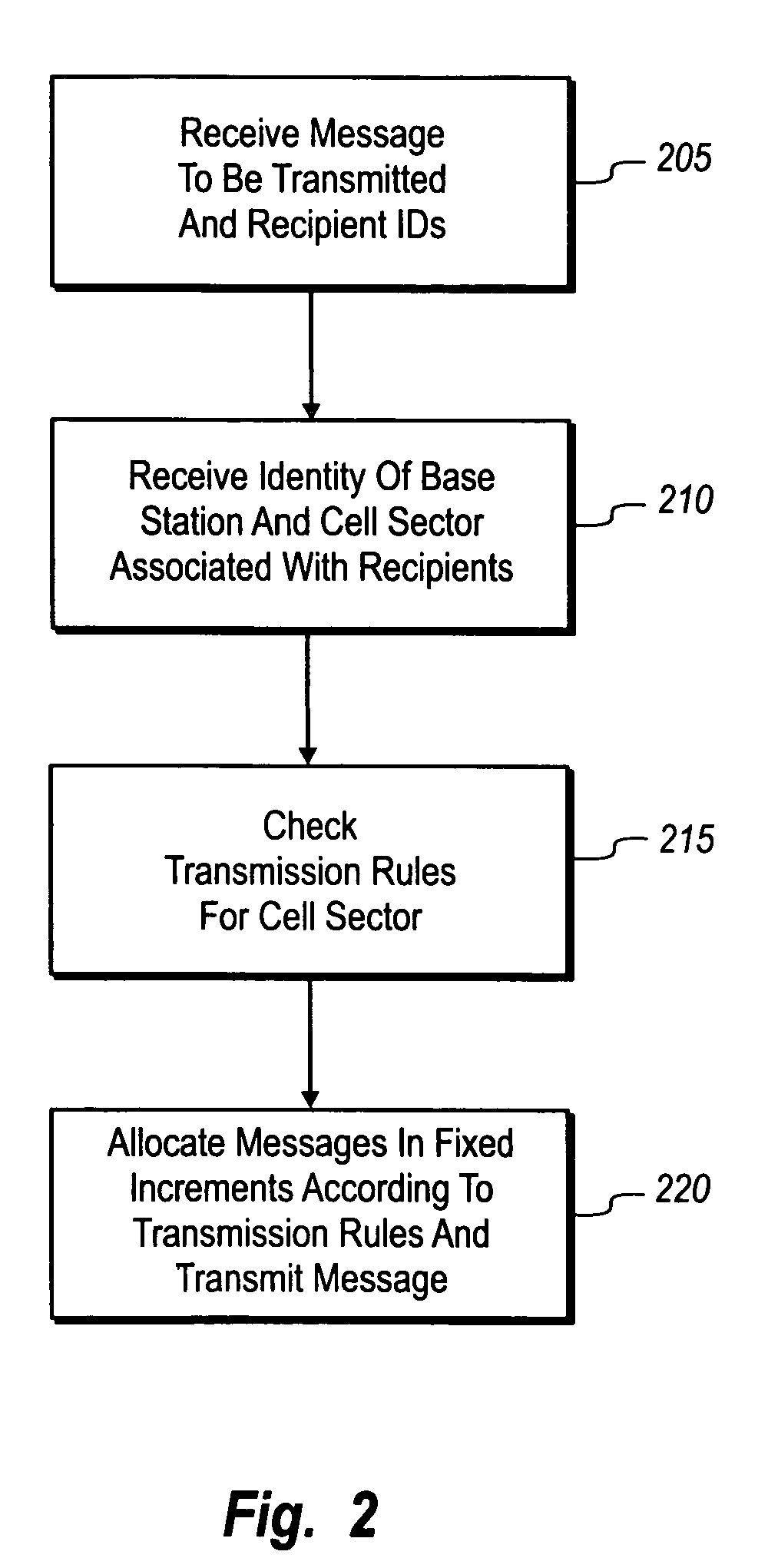Load balancing between users of a wireless base station
- Summary
- Abstract
- Description
- Claims
- Application Information
AI Technical Summary
Benefits of technology
Problems solved by technology
Method used
Image
Examples
Embodiment Construction
[0018]The present invention extends to methods and systems for load balancing the traffic in a cell or a cell sector in a wireless communication network. The present invention extends to any wireless network wherein store and forward messaging systems are in use. Examples of such messages include multimedia messaging service (MMS) messages, or instant voice messages that are created by the sender and transmitted to the recipient for delivery and use after the time that they were created.
[0019]While the methods disclosed herein can be used for a variety of messages, they are particularly suited for use with store and forward messages that can be delayed or time-shifted without significantly reducing the value of the messages to the senders or the recipients. As previously noted, MMS messages and instant voice messages represent examples of store and forward messaging systems that are well suited for use with the load balancing methods disclosed herein. Instant voice messages are crea...
PUM
 Login to View More
Login to View More Abstract
Description
Claims
Application Information
 Login to View More
Login to View More - R&D
- Intellectual Property
- Life Sciences
- Materials
- Tech Scout
- Unparalleled Data Quality
- Higher Quality Content
- 60% Fewer Hallucinations
Browse by: Latest US Patents, China's latest patents, Technical Efficacy Thesaurus, Application Domain, Technology Topic, Popular Technical Reports.
© 2025 PatSnap. All rights reserved.Legal|Privacy policy|Modern Slavery Act Transparency Statement|Sitemap|About US| Contact US: help@patsnap.com



